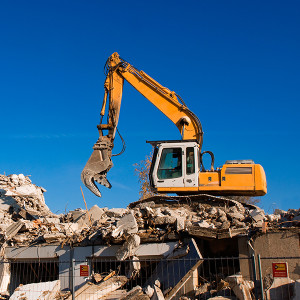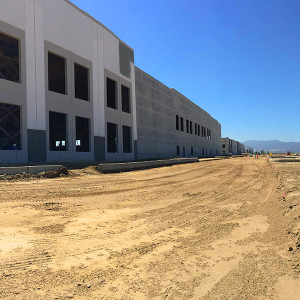Going Green: Sustainable Construction Practices for a Brighter Tomorrow
Watson's Blog
Going Green: Sustainable Construction Practices for a Brighter Tomorrow

Southern California is an epicenter of commerce. From the nation’s busiest ports to the master-planned distribution centers of the Inland Empire, we are constantly growing to keep up with the demands of the global market. But as we grow, we must take conscientious steps to ensure that we are not putting too great of a strain on our ecosystem. Green building provides the guidelines for balancing the needs of business with those of the environment.
Green Building Defined
Green building is an eco-friendly, sustainable approach to construction, operation, renovation, and demolition. Environmental sustainability begins at the design stage of a facility’s life cycle; alternatively, with older structures, sustainability features can be incorporated to extend the useful life of an asset. The objective is to develop buildings that are both highly functional and highly efficient, all while minimizing the impact on the environment.

Green from the Ground Up
Ideally, this objective is taken into consideration at the design stage, prior to onsite construction. This earlier stage planning allows for sustainable practices such as local sourcing of materials to reduce truck deliveries and site management programs such as recycling unused construction material. Construction waste can easily be diverted from landfills to recycling centers or other construction sites — as can the waste from demolitions, should a structure need to be torn down. A great deal of green building is not seen in the finished product but is instead found in reducing the environmental footprint of the construction process.
Step-by-Step Sustainability
Selecting the type of building materials also influences the environmental impact of a building during construction and throughout its life cycle. Non-VOC emitting paints have long been a key component in green construction, along with carpets manufactured with recycled materials; both of these factors reduce off-gassing in enclosed areas, such as office spaces. This improves the indoor air quality and contributes to a healthier workspace for employees. Upon construction completion, a “flush out” period to ventilate the entire space is recommended to dissipate airborne contaminants that may have been introduced during building construction.
LEED Certification
The Leadership in Energy & Environmental Design (LEED) program is an internationally recognized green building certification system. Developed by the US Green Building Council (USGBC), LEED provides building owners and operators with a concise framework to identify and implement practical and measurable green building design, construction, operations, and maintenance solutions.
 LEED Certification provides third-party verification that a building is designed and constructed according to the following metrics: energy savings, water efficiency, CO2 emissions reduction, improved indoor environmental quality, and stewardship of resources and sensitivity to their impacts.
LEED Certification provides third-party verification that a building is designed and constructed according to the following metrics: energy savings, water efficiency, CO2 emissions reduction, improved indoor environmental quality, and stewardship of resources and sensitivity to their impacts.
As part of our mission to be good stewards of the land, Watson Land Company adopted the LEED guidelines in 2004 as a benchmarking framework for our development program. Our headquarters in Carson received a LEED Platinum level certification, with sustainable design and operational features that are both eco-friendly and highly efficient. Our portfolio has a number of LEED-certified buildings, and we are committed to continue balancing the needs of business with the stewardship of the environment.
Protecting the World for Future Generations
These are only some of the green construction practices seeking to reduce our impact on the environment and to simultaneously improve the workspaces we develop. Practices and resources are constantly changing and vary widely among construction companies, but the ultimate goal is always the same: Through conscientious, sustainable construction and operation, we can preserve the world and its resources for many generations to come.
To explore LEED-certified buildings that are both environmentally friendly and operationally efficient, visit www.watsonlandcompany.com/properties/properties-for-lease/.



